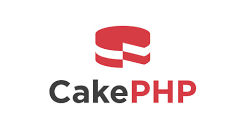Introduction to CakePHP
CakePHP is a frame work which makes easy to code. It uses MVC model. That is Model,View and Controller architecture. In next lessons I will explain you about MVC with suitable examples.
Cake php has got it’s own naming conventions. I underline the word naming conventions because it is so much valuable. But I like cakePHP because it is very easy than other frame works.
Understanding MVC in CakePHP
CakePHP is a fast development framework designed for PHP that adheres to the software architecture pattern known as Model-View-Controller (MVC). An program is divided into three primary components using MVC:
- Model: The model represents the data of the application and the logic for interacting with that data.
- View: The view renders the data from the model into a format that can be displayed to the user.
- Controller: The controller handles requests from the user and interacts with the model and view to generate a response.
Understanding MVC in CakePHP
Model classes in CakePHP are used to represent the model layer. Typically, model classes are in charge of communicating with databases to get and save data. Business logic for processing and validating data may also be included in them.
CakePHP uses template files to represent the view layer. Although they can be written in XML or PDF as well, template files are usually created in HTML. The output that is shown to the user is generated by template files using data from the model.
Controller classes in CakePHP serve as representations of the controller layer. The controller classes are in charge of responding to user requests by coordinating with the model and view.
Building Web Applications with CakePHP
Using CakePHP to create web applications is a simple procedure. The following is a high-level summary of the actions needed:
- Install CakePHP. IIS, Nginx, and Apache are just a few of the web servers on which CakePHP can be installed. Additionally, a variety of virtual computers that are already set up can be downloaded.
- Create a database. Numerous database systems, such as MySQL, PostgreSQL, and SQLite, are supported by CakePHP.
- Create model classes. Model classes stand in for your application’s data and the logic used to interface with it.
- Create view files. To render the data from your models into a format that the user can see, utilize view files.
- Create controller classes. Controller classes interact with views and models to provide a response to user queries.
- Configure CakePHP. For CakePHP to locate your models, views, and controllers, it must be configured.
- Start developing your application! After setting up CakePHP, you can create new controller classes, view files, and model classes to begin designing your application.
Data Access and ORM
In CakePHP, the Object-Relational Mapper (ORM) manages data access. An abstraction layer is supplied by the ORM between your application and the database. This implies that in order to communicate with the database, you do not need to write any SQL code. Alternatively, you can engage with the database more object-orientedly by using CakePHP’s ORM.
The ORM is made up of two primary parts:
- Table objects: The database’s tables are represented as table objects. They offer ways to store, get back, and remove data.
- Entity objects: In the database, entity objects stand in for individual records. They offer ways to see and edit the information included in the record.
For each table in your database, you must first construct a table object before using the ORM. The TableRegistry class can be used for this.
You can use a table object to save and retrieve data once you’ve generated it. You can use the find() method to get data and the save() method to save data.
Support for relationships between tables is also offered by the ORM. Use the belongsTo(), hasMany(), or hasOne() methods on the table objects to specify a relationship between two tables.
Once a relationship between two tables has been established, associated data can be saved and retrieved using the ORM. For instance, you may use the search() function on the Post table object and give the contain option to retrieve all of the comments related to a post.
Conclusion
Ultimately, CakePHP is a reliable and effective PHP framework that speeds up web development without sacrificing quality. Because it follows the Model-View-Controller (MVC) architecture, creating and maintaining web applications is made simple by the code organization. Strong Object-Relational Mapping (ORM) capabilities of CakePHP facilitate database interface, and its integrated features, such routing and authentication, shorten development times. The framework expedites project progress by prioritizing convention over configuration to assure consistency. Additionally, a helpful community and a wealth of documentation provided by CakePHP are great resources for developers. Rapid web development is possible with CakePHP, which offers a strong platform for building dynamic, feature-rich applications.Read about our other post at codingshikho.com
